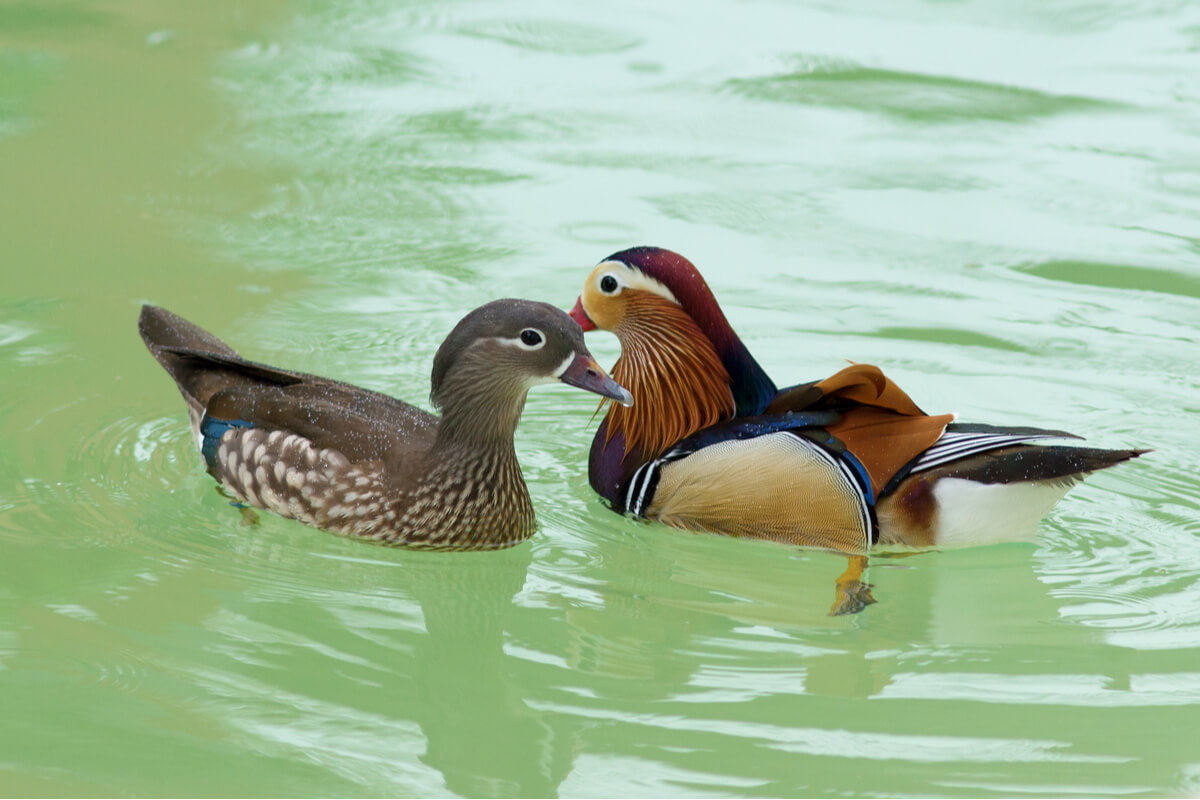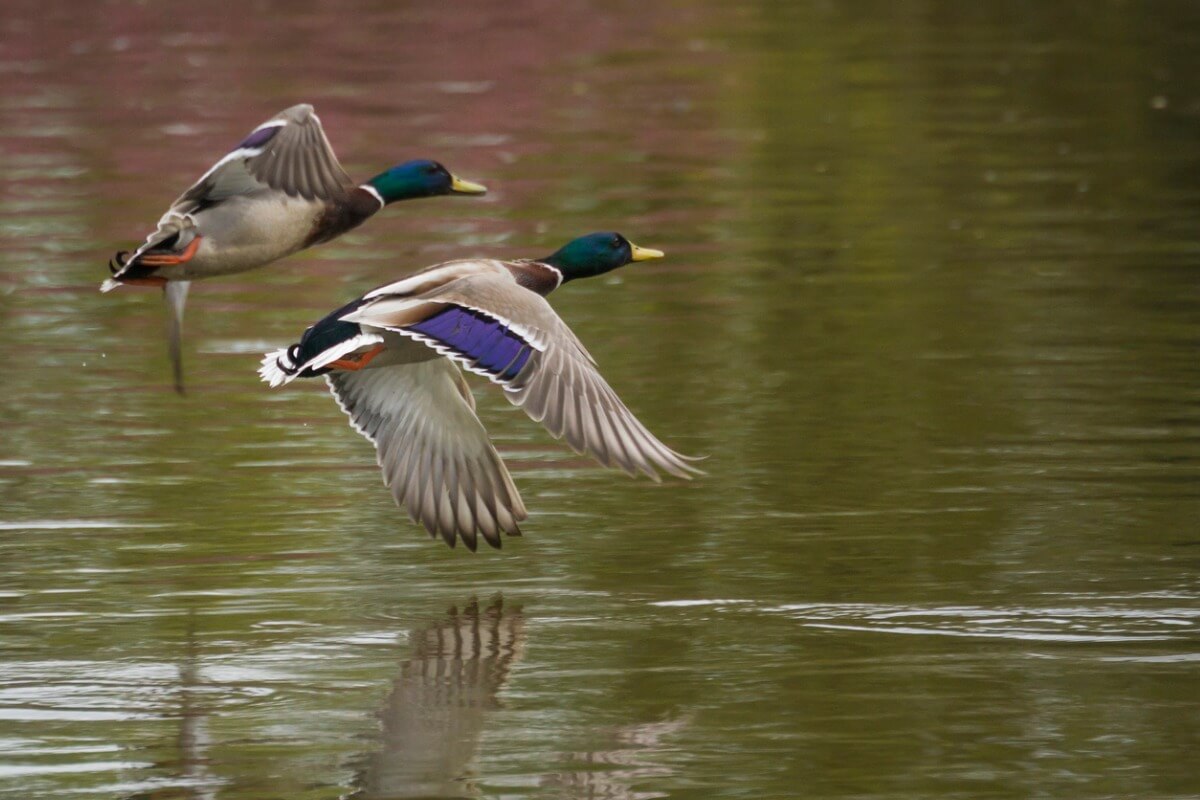Can Ducks Fly?

If you’ve ever come across any ducks, it’s very likely that you’ve seen them swimming in lakes or walking on the banks of ponds. However, these animals are rarely seen taking flight. They’re birds that usually inhabit aquatic environments , but, even so, ducks can fly and can reach surprising heights.
These birds can also travel long distances, as they have migratory habits to reach their destination every year. They usually fly in company and they do it to look for warmer climes, but also to be able to reproduce.
This quality of aerodynamic flight isn’t for all ducks, as some of them are more domestic and fly quite low.
General characteristics of duck plumage
The females stand out for their opaque brown feathers. This shade of brown is a camouflage that they use to protect themselves from predators and, at the same time, to defend their young.
In contrast, males have colorful plumage to seduce the females. These ducks’ feathers will molt when the females are busy incubating their eggs. When the males shed their feathers they can’t fly temporarily, but they resume their flight in early autumn and regain their colorful plumage.
Some species of ducks have a robust body, resembling their relatives geese and swans, so it’s strange to think that they’re capable of flying.
In the case of females, they also fly again once their offspring come out of the shell.

Why do ducks fly?
Ducks can fly great distances to avoid winter climes . In the same way, the flight capacity will depend on the species and the objectives they want to achieve. These birds usually fly in groups with the following qualities:
- They’re arranged in a V shape to save energy – like a good work team.
- The duck that has the longest track record in flight migrations is the one that leads the group. The leader takes the brunt of the wind in its wings.
- Ducks with more flying experience take turns being the leader who will guide the next migration. This alternation is also the main form of communication within the group, so that no one gets lost on the trip.
Some ducks can fly higher
The cinnamon jar duck (Tadorna ferruginea) has an extraordinary ability to fly very high, reaching heights of up to 6,800 meters above sea level. It lives in Europe, Africa and Asia, although on winter days it usually visits the Nile River.
The cinnamon jar duck also likes to visit the surroundings of the lands of Tibet. It can fly across the highest peaks of the Himalayan valleys, so the rugged and inclement terrain isn’t a problem.
Domestic ducks that can fly
Ducks can fly even when they’re domesticated, that is, when they live with people in a home – usually in country houses . Owners of these animals often worry that their ducks will fly away at some point.
In reality, this doesn’t need to happen, as long as the necessary conditions are given to the bird. In any case, special care must be taken with the Bantams, Muscovies, Mallards, and East Indies species, since these ducks can take flight at any time if they’re not comfortable with the environment.
Life expectancy and behavior
It’s already quite clear that ducks can fly, especially when the environmental conditions are inclement. Thanks to these migratory and adaptive mechanisms, a wild duck can live up to 20 years. On the contrary, the life expectancy of these birds can be cut in half in captivity.
Ducks are waterfowl that love to groom themselves. They do this to keep clean, remove feather scales, and kill parasites. They also enjoy swimming with their young in the lakes . They’re such good parents that they can become aggressive if someone approaches their offspring.

Ducks enjoy their aquatic habit in ponds and lagoons. However, when they want to fly, their speed can reach 40 to 60 miles per hour. The quality of their flight doesn’t make them the fastest birds in the world, but it does the job! In nature, not everything is what it seems.
All cited sources were thoroughly reviewed by our team to ensure their quality, reliability, currency, and validity. The bibliography of this article was considered reliable and of academic or scientific accuracy.
Biografía – El pato, Animapedia. Recogido a 7 de mayo en https://animapedia.org/animales-acuaticos/pato/
Biografía – Pueden volar los patos, Consejosparamihuerto. Recogido a 7 de mayo en https://www.consejosparamihuerto.com/animales/gallinas/pueden-volar-los-patos/
